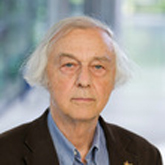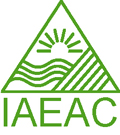New Ways of Vision: Beauty and Fitness for Purpose of Proteins
Robert Huber

Robert Huber was born in 1937 in Munich. He studied chemistry at the Technische Universität München (TUM), where he also completed his Ph.D. and habilitation. Since 1972, he has been a member of the Max-Planck-Gesellschaft and Director at the Max-Planck-Institut für Biochemie until his retirement in 2005. Since 1976, he also serves at the TUM as a Professor. He holds appointments as Guest Professor at the Universität Duisburg-Essen (Germany), the Cardiff University (Great Britain), the Universidad Autonoma de Barcelona (Spain), and the Seoul National University (Korea). He serves as a member of the Board and/or Scientific Advisory Board of a number of pharmaceutical and crop science companies, and he is co-founder of two companies, Proteros and Suppremol, located in Martinsried and offering services for drug discovery and development and for the development of novel therapies for autoimmune diseases, respectively. Huber has made major contributions to the understanding of the structure and function of biological macromolecules. He has studied proteases and their natural and synthetic inhibitors, metalloenzymes (iron, nickel, molybdenum, copper), proteins of the immune system (antibodies and antibody receptors), protein hormones and their receptors, protein kinases, enzymes of amino acid biosynthesis, enzymes of cofactor and vitamin biosynthesis and proteins of energy and electron transfer. In addition, he has contributed to the development of instruments for data collection and to methods in protein crystallography, particularly Patterson methods, graphic methods, and refinement, to the use of electron rich metal clusters, and most recently to the methods and instruments for crystal improvement.
He has been honoured by numerous honorary doctorates, professorships, memberships in learned societies and awards, including the Otto-Warburg Medal, the Emil von Behring Medal, the Sir Hans Krebs Medal, the The Linus Pauling Medal, Max Tishler Prize and, in 1988, the Nobel Prize for Chemistry together with H. Michel and J. Deisenhofer.

